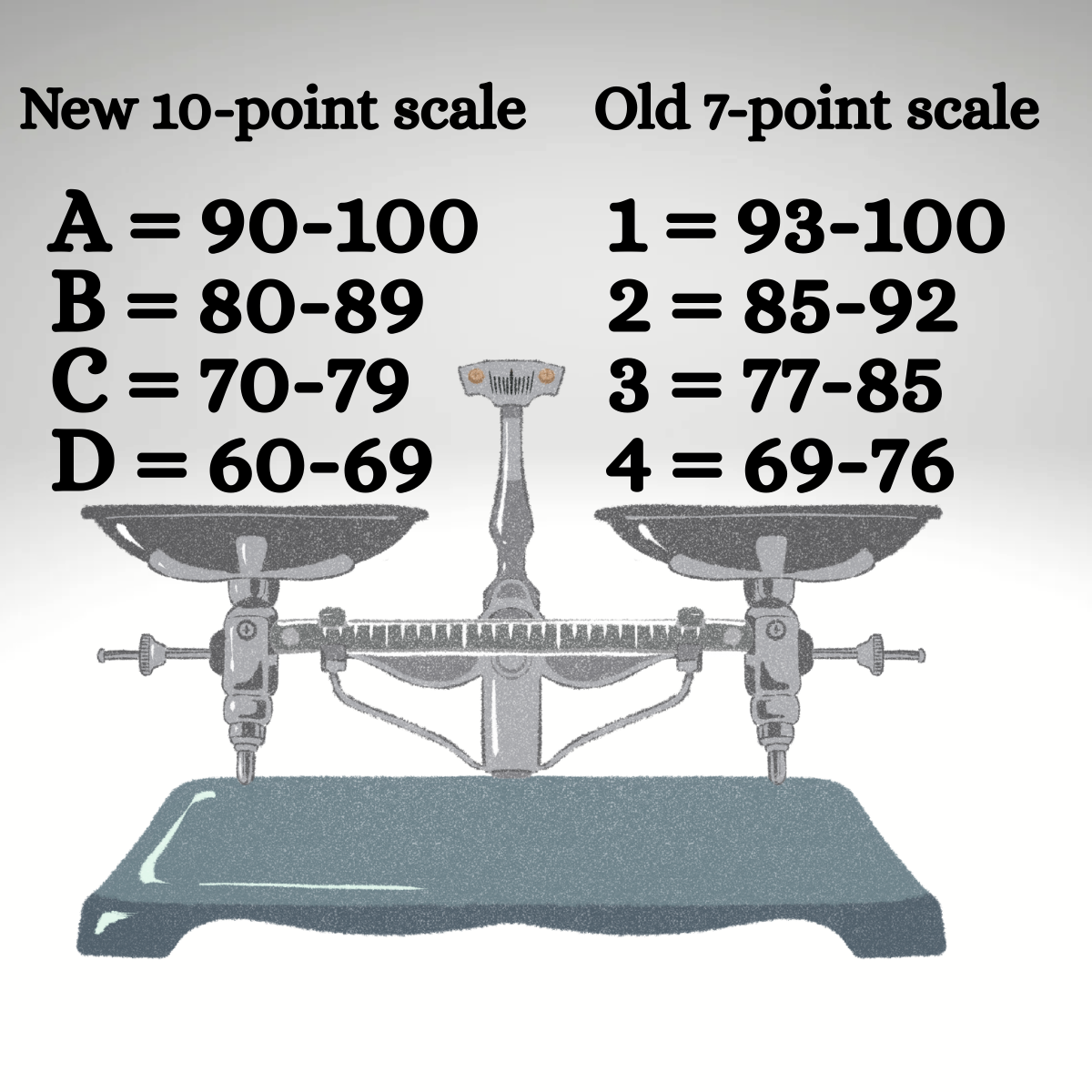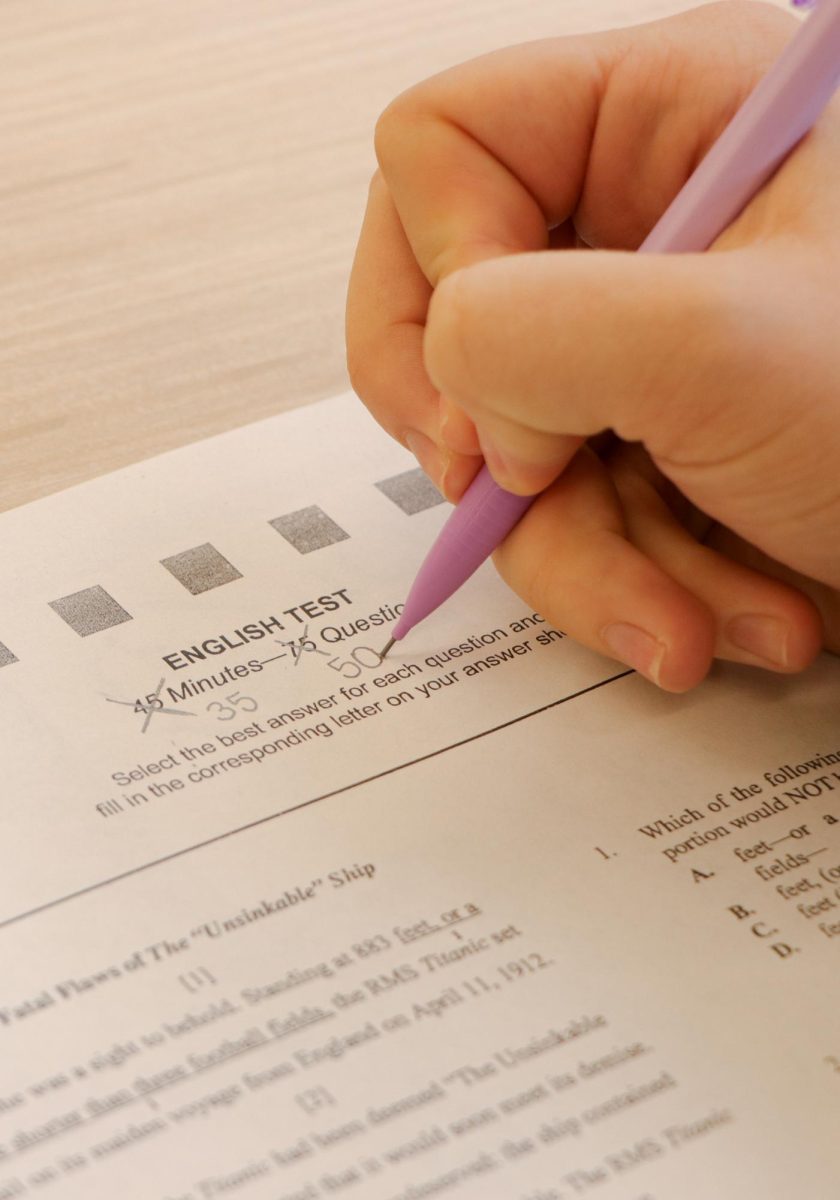Grades play a crucial role in the life of a student. From college admissions to scholarship awards, they play a massive part in determining our futures, and often become the sole focus of high school. Understanding the influence that grades have helps students navigate their academic journey more effectively. Millard Public Schools has been following a 7-point grading scale for the last 55 years, but going forward students will be graded on a 10-point scale starting in the 2025-2026 school year.
A district-wide grading scale committee led by Associate Superintendent of Educational Services Dr. Heather Phipps, gathered input from teachers, parents, and students to help make this decision. In a School Board Committee meeting, Phipps outlined the reasons for the recommendation to change.
“What we heard strongest and loudest was the disconnect between Millard and our postsecondary partners. Over and over they said ‘we are just not setting our students up for success when we’re using one scale and postsecondary is using another,” Phipps said.
As it stands, a 1 in Millard is granted for grades 92.5-100, but at the college level, this is given for grades 90-100. For current students enrolled in Early College, dual enrollment classes through UNO, or Millard academies, this means that they could earn a 1 on the college level, but a 2 on the high school level.
Consistency isn’t the only reason students and parents reported that they favor a broader scale.
“A benefit of a 10-points scale is that it is easier to get higher grades which in turn boosts your GPA. The 2.5% from a 90% to a 92.5% can be a big reach especially later in the year. It also could help you have more future opportunities because the higher your GPA is the more you have chances to go to a better college in turn getting a better job,” freshman Jenna Glab said.
Teachers too, have shared these concerns about the disadvantage Millard students are put at under the current grading scale.
“I am worried about what our kids are going up against when they apply to colleges. I think it puts them at a major disadvantage coming from a 7 point school. If everyone was a 7 point school, I would be happy and think we should stay at 7 points, but there are a lot of schools that are at 10 point. This is true everywhere in the nation and our students are going up against them for college admission. This really doesn’t sit well with me,” math teacher Brett Keim said.
Keim is correct with this assessment. A major reason this change hadn’t been implemented in the past was Millard was under the belief that colleges were taking the difference in grading scales into account when comparing prospective students, but it turns out this is not the case.
Phipps reported in her presentation that colleges they contacted said, “We don’t know or care what your grading scale is. We convert everybody’s grading scale to our own scale. We just convert it.”
“If it’s weighted, they take out the weights. They put everybody on the same scale. They don’t care if your GPA came from a 7pt or a 10 pt. grading scale. If you were weighted, most of them take the weights out, although some have a weighted and an nonweighted scale,” Phipps explained.
Even before students begin looking into postsecondary education, they will feel the impacts of this change. According to a Common Sense poll, 89% of students are looking forward to having a 10-point grading scale.
“There will be better grades and grade point averages for the district and it will be less confusing for parents and kids,” junior Jaime Lawrence said.
It is important to note, however, that previous grades will not be altered to align with the new grading scale. Additionally, future transcripts will follow the traditional ABC grading system rather than Millard’s current 123 scale.
“A major downside is that it’s really unfair to students who took any classes with the 7-point scale if the grades won’t be updated to change it. A student who took a class with the 7-point scale this year and got a 91% would have a 2/B. Then a student who takes the same class next year with the 10-point scale could also get a 91% but they’d get an A/1 instead of a B despite the two having the same score,” sophomore Ella Michael said.
With the majority of students favoring a 10-point scale, it is clear that they are anticipating overall higher grades on average, yet teachers and the grading-scale committee have a different outlook.
Phipps reported in her conversations with other Nebraska districts that have made this transition that “without exception, after 1 year, there was no change in grade distribution in these school districts.”
Science teacher Ron Kaspar anticipates that there will be a similar outcome in his own classroom.
“There is a standard for a grade and when students reach the standard they will get the grade. The net result in my classroom is that I will scale my tests less, and tests drive their grade,” Kaspar said.
“It will only affect student grades for a short amount of time until teachers adjust the difficulty of their grading/the course.”











